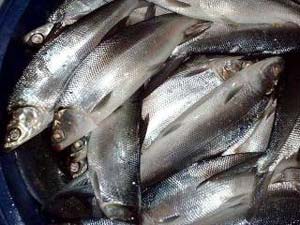Increasing seafood poisoning is due to climate change
Environmental pollution and global warming are adversely affecting marine ecosystems, making seafood species more susceptible to poisoning. It is estimated that there are about 50,000 cases of ciguatera poisoning in the world each year, with more than 90% of cases not reported.
Ciguatera is a form of food poisoning caused by eating fish that live in coral reefs (reef fish) that contain a number of natural toxins originating from some tropical waters. Accumulated in the head, liver, intestines and eggs, ciguatera toxins are very stable, not decomposed during cooking and are often identified through symptoms in victims of poisoning such as nausea, cramps , headache, muscle aches, itchy or unable to speak.

Flounder fish sold at Philippines seafood market
(Photo: Imageshack.us)
Scientists at Woods Hole Oceanographic Institute (USA) argue that when the ocean warms up due to the effects of greenhouse gases and chemical pollution, damaged coral reefs and toxic algae have chance to multiply. The situation of ciguatera poisoning is increasing due to the phenomenon of climate change affecting coral reefs, where dozens of fish species regularly go to feed. They absorb toxic chemicals when ingesting smaller fish that consume toxic algae.
Previously, ciguatera poisoning occurred only in the South Pacific, Caribbean and Indian Ocean, but has now spread throughout Asia, Europe and North America. Typically in the US, since the 1970s, seafood poisoning cases have increased 5 times to more than 250 cases per year. Meanwhile, due to the import of most seafood, Hong Kong happens hundreds of ciguatera poisoning cases each year, compared with less than 10 in the 1980s.
ATTENTION
- Instructions on how to eat seafood without allergy, poisoning
- Why do seafood often cause allergies?
- How to identify urea-impregnated seafood
- Mistakes when eating seafood many people suffer
- Preventing allergies from seafood
- People have made the pace of climate change hundreds of times faster
- This is how Dubai copes with climate change
- What is Climate Change?
- 100 million people could die before 2030 due to climate change
- Two types of fish contain a lot of mercury you need to know
- Marching for climate change around the world
- The terrifying change of the Earth due to climate change
 Is the magnetic North Pole shift dangerous to humanity?
Is the magnetic North Pole shift dangerous to humanity? Washington legalizes the recycling of human bodies into fertilizer
Washington legalizes the recycling of human bodies into fertilizer Lightning stone - the mysterious guest
Lightning stone - the mysterious guest Stunned by the mysterious sunset, strange appearance
Stunned by the mysterious sunset, strange appearance Top 4 food groups that can easily cause Botulinum poisoning warned by WHO, all familiar dishes to Vietnamese people
Top 4 food groups that can easily cause Botulinum poisoning warned by WHO, all familiar dishes to Vietnamese people  How to detect and treat botulinum poisoning?
How to detect and treat botulinum poisoning?  Doctors point out two main causes of milk poisoning
Doctors point out two main causes of milk poisoning  The path of mercury in the environment
The path of mercury in the environment  Symptoms of mercury poisoning and how to prevent it
Symptoms of mercury poisoning and how to prevent it  How dangerous is the caterpillar poisoning?
How dangerous is the caterpillar poisoning? 